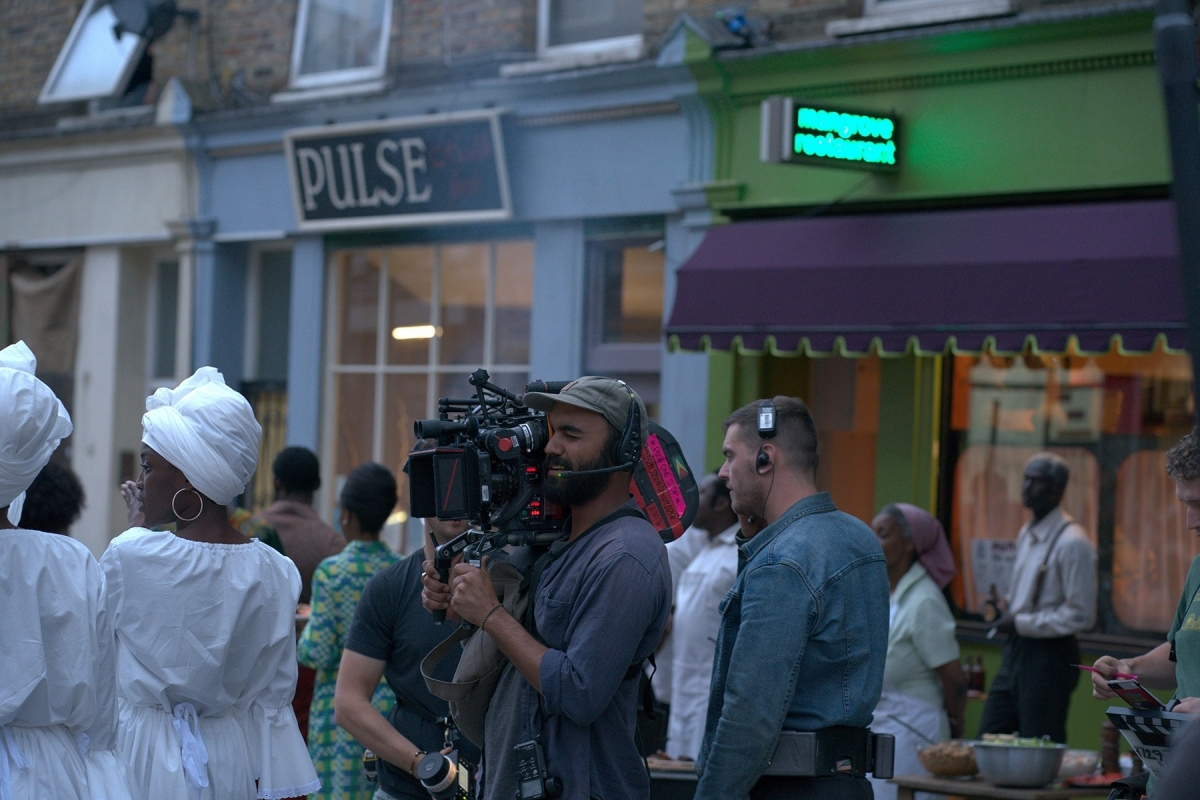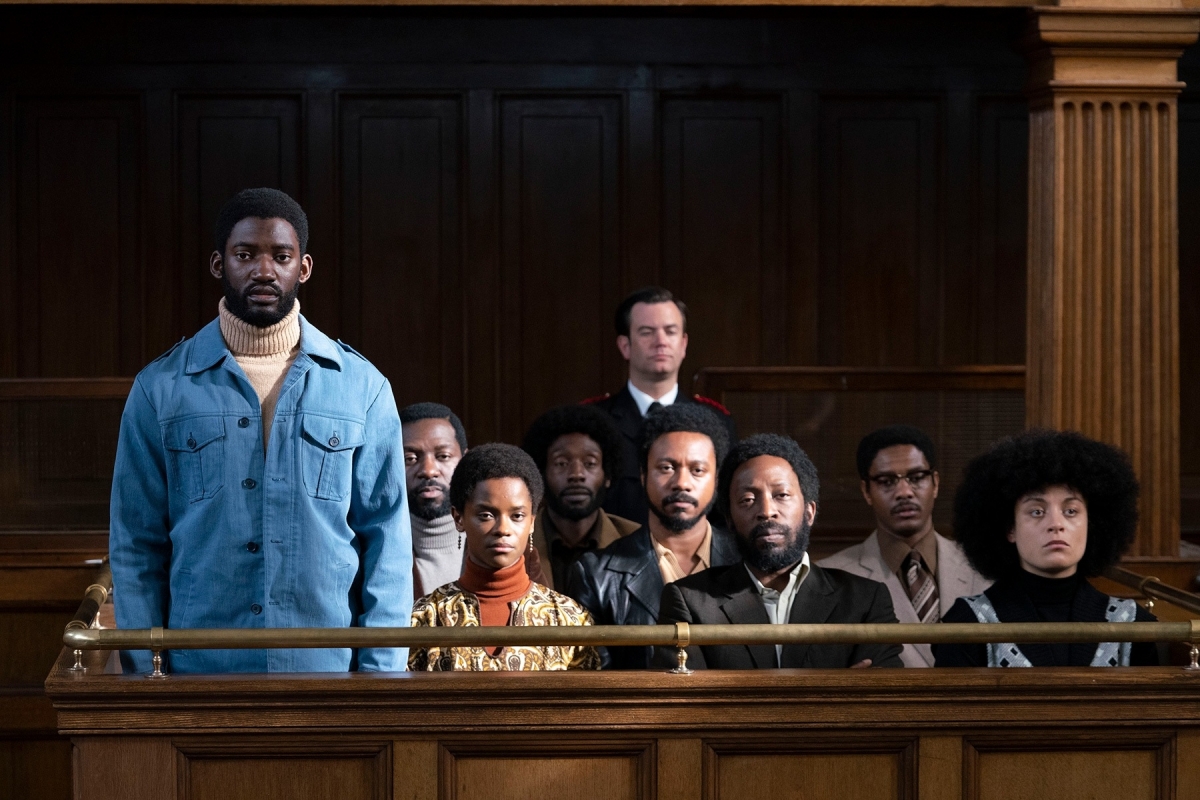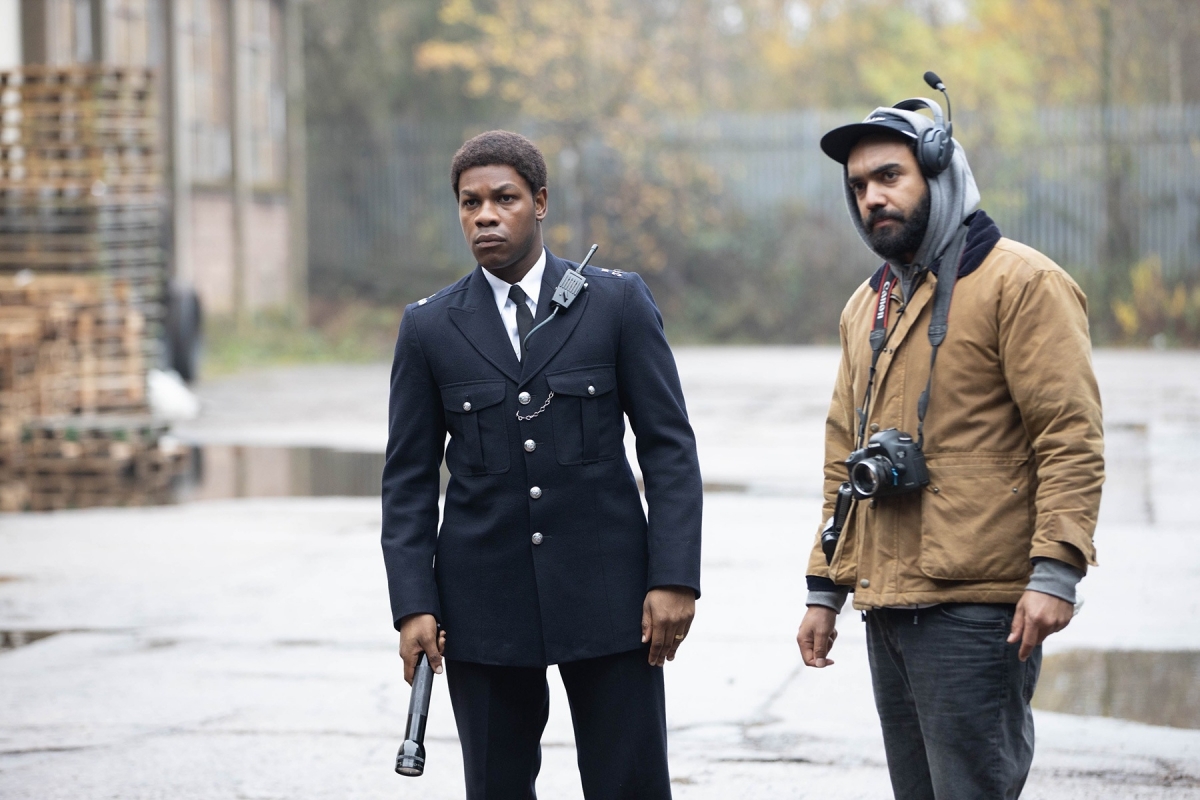DP Shabier Kirchner used Kodak 35mm & 16mm film for Steve McQueen’s acclaimed 'Small Axe' anthology, including the feature-length 'Mangrove'

"Small Axe" – Episode: Red, White and Blue. Picture Shows: Leroy Logan (JOHN BOYEGA Image copyright: BBC/McQueen Ltd/Will Robson-Scott.
Small Axe, the five-part anthology of films, directed by Oscar, BAFTA and Golden Globe-winning filmmaker Steve McQueen, shot by Antiguan DP Shabier Kirchner, have earned five-star reviews around the world for their epic, yet intimate, invocation of black British history. After debuting at the 2020 Cannes and London Film Festivals, Small Axe is available to watch on BBC One, BBC iPlayer and Amazon Prime.
Saluted as “remarkable,” “necessary,” and “timely”, the standalone stories variously shine a light on true-life experiences amongst London’s West Indian community, particularly the post-Windrush generation, that McQueen himself was born into.
Set during the late 1960s to the mid-1980s, the different, vividly depicted accounts in the Small Axe collection represent love letters to black resilience and hard-won victories in the face of institutional racial prejudice. The anthology’s title derives from an African proverb, popularized by Bob Marley’s 1973 song of the same name, which features the lyrics, “If you are the big tree, We are the small axe, Sharpened to cut you down.” In essence, small but sustained action can create change.

"Small Axe" – Episode: Mangrove. Behind-the-Scenes Picture Shows: DP Shabier Kirchner shooting on 2-perf 35mm film. Image copyright: BBC/McQueen Ltd.
Shot on 35mm in 2-perf, the initial, feature-length film, Mangrove, centers around the popular West Indian restaurant The Mangrove in London's Notting Hill, in 1968, which became a base for the local Black community, including respected intellectuals, activists and artists. The restaurant was regularly targeted by the local council and police, who would sanction and raid The Mangrove without justification. This mistreatment prompted the restaurant's owner, Frank Crichlow, and the local community to take to the streets in peaceful protest in 1970. However, the wrongful arrests of civil rights campaigners and black activists, who were later charged with incitement to riot, led to the highly publicized, landmark trial of The Mangrove Nine.
Mangrove is followed by a quartet of hour-long narratives: Lover’s Rock, a tale of young love set at a blues house party in the 1980s; Red White And Blue, shot on 35mm in 3-perf, the true story of the complex life of black police officer Leroy Logan, who joins the force believing racism can be reformed from within; Alex Wheatle, the eponymously-titled story of the award-winning Brixton Bard who was imprisoned during the 1981 Brixton Uprising; and Education, shot on Super16mm, an account about a young boy named Kingsley and the injustices of the schooling system.
Although the Small Axe stories themselves are set in the past, McQueen has poignantly said, “They are very much concerned with the present. A commentary on where we were, where we are, and where we want to go.”

"Small Axe" – Behind-the-Scenes. Picture Shows: Director Steve McQueen (l) with DP Shabier Kirchner (r). Image copyright: BBC/McQueen Ltd/Will Robson-Scott.
DP Shabier Kirchner was highlighted in 2018 by Variety as a ‘Cinematographer to Watch,’ having made a name for himself in the US indie scene, with features such as director Matthew Porterfield’s Sollers Point (2017), Crystal Moselles’s Skate Kitchen (2018) and Annie Silverstines Bull (2019). He was introduced to McQueen by the director’s long-term cinematographic collaborator, DP Sean Bobbitt BSC, who was unable to work on the project.
Kirchner freely admits, “Although they were both incredibly warm and welcoming to me, it was nonetheless quite daunting to find myself in the ring on such an important project with Steve, who has been one of my favorite artists for as long as I can remember, whilst also being highly aware of his long-lasting collaboration with Sean on films such as Hunger (2008) and 12 Years A Slave (2013).
“But equally daunting was the fact that I am West Indian, from Antigua, and I knew I would also be holding the flag of my country, the Caribbean and our heritage. I was moved to tears when I read the script, for several different reasons. I had never read West Indian people on the page like this before. Certain lines – like Althea’s statement in Mangrove that, ‘We mustn't be victims but protagonists of our own story’ – shook me to the core. Small Axe resonates far beyond cinema – it’s about our ancestry, our daily lives today and tomorrow.”

"Small Axe" – Episode: Mangrove. Picture Includes: Darcus Howe (MALACHI KIRBY), Altheia Jones (LETITIA WRIGHT), Frank Crichlow (SHAUN PARKES), Barbara Beese (ROCHENDA SANDALL) and Rothwell Kentish (RICHIE CAMPBELL). Image copyright: BBC/McQueen Limited/Kieron McCarron.
Production on Small Axe took place between June and December 2019 at locations around Wolverhampton in the West Midlands, plus a stint in the Kilburn area of northwest London, dressed to double as Notting Hill. Mangrove was shot over the course of seven weeks. The rest of the films in the series took between two and four weeks each to shoot, with filming interspersed with breaks for rest, recce’s and prep.
“Steve has always shot his feature films on film, so celluloid was always going to be a big part of the equation on Small Axe,” says Kirchner. “He said, early on, that we were not making TV and asked me to approach and think of each production as if it were a feature film. Within that he really encouraged me to trust the actors, the environment and myself. We knew that for some of the stories – like in Mangrove, Red White and Blue and Education – we wanted to recreate a specific time and a place, and film is great for that.”
Rather than switch between different types and speeds of filmstocks, Kirchner used KODAK VISION3 500T Color Negative Film 35mm (5219) and VISION3 500T 16mm (7219) for the trio of celluloid-originated films, in order to keep a familiarity of texture and look. The DP shot without filtration and applied the corrections as necessary in the final grade.

"Small Axe" – Episode: Mangrove. Behind-the-Scenes Picture Shows: DP Shabier Kirchner shooting Darcus Howe (MALACHI KIRBY). Image copyright: BBC/McQueen Ltd/Kieron McCarron.
“The 500T 5219 and 7219 are probably my favorite film stocks,” he says. “They are so versatile and can easily handle a wide variety of lighting conditions – from sunny or overcast exteriors, to brightly-lit and dark interiors with mixed color temperatures from LEDs, fresnels and fluorescents – and the results look so beautiful.
“Also, Kodak emulsion has a broad and deep range for capturing the wide variety of black skin tones. The results look rich, with subtle hues and shades of color that you would normally have to fight to achieve the same result with digital.”
Kirchner shot Mangrove on 35mm (500T 5219) in 2-perf mode on ARRICAM LTs using Cooke Speed Panchros lenses to help summon the authentic 1970’s aesthetic. The exposed negative was push-processed by either one or two stops to increase grain and contrast in the image, deepen the color saturation and, frequently, to make colors such as red and orange “really pop.”

"Small Axe" – Episode: Mangrove. Picture Shows: Director Steve McQueen with DP Shabier Kirchner. Image copyright: BBC/McQueen Ltd/S Goodwin.
“2-perf has a visually-engaging grain structure, like 16mm, but gives a canvas of widescreen 35mm that was perfect for framing the protagonists in Mangrove together as a collective, or just focusing on one face in a tight close-up,” says Kirchner.
Red White and Blue was filmed with classical, restrained movement and framing on 35mm (500T 5219) 3-perf using ARRICAM LT and ARRIFLEX 235 cameras. Cooke S4 glass helped to give an overall sharper and cleaner-looking result than Mangrove. Low-key lighting and normal exposure/development delivered a softly desaturated result to help focus the audience’s attentions on the torments of Leroy Logan, performed by actor John Boyega.
For Education, Kirchner went with Super16mm (500T 7219), using ARRI Zeiss Master Primes fitted to an ARRIFLEX 416 16mm camera. “This story is very personal to Steve on multiple levels,” reveals Kirchner. “To inform the look, we talked about 16mm-originated BBC Play for Today dramas from the early 1970s, directed by people such as Alan Clarke, Ken Loach and Mike Leigh. We decided to film Education on 16mm because of its more prominent grain structure, and we shot it all handheld to make it feel immediate, raw, real and personal.”

"Small Axe" – Episode: Red, White and Blue. Picture Shows: Leroy Logan (JOHN BOYEGA), with DP Shabier Kirchner. Image copyright: BBC/McQueen Ltd/Paul Calver.
Camera and lenses for Small Axe were provided by ARRI Rental in London, with film processing done at Cinelab in Slough and 2K film scans provided by Lipsync in London. The final DI grade on the series was done by Tom Poole at Company3 in New York, who Kirchner says, “did a fantastic job in not just enhancing the photochemical feeling in all of the films, but he has an incredible talent of making the beauty in black skin really shine.”
“If I could only shoot on film for the rest of my life, I would be a happy man,” says Kirchner. “Digital is an incredible capture technology and has its place, but my eyes see things more appropriately on film. On Small Axe, celluloid proved once again to be one of those bullet-proof formats that delivers a touch of the ‘Je ne sais quoi!’”
During production Kirchner made it his personal mission that each film camera magazine was emblazoned with the flag of a different Caribbean country – around a dozen in total.
“I feel so blessed and count my lucky stars to have worked on Small Axe with Steve. That man is a force of nature. When I look at these films, I am incredibly proud. I see myself; I see Steve and our entire history in these stories, past, present and future.
“We have to get rid of racism and prejudice – behind the camera, on-screen and in our communities. Small Axe contributes to the conversations about all of these things. My hope is that some youth, somewhere, perhaps in the Caribbean, will watch Small Axe, and even read this article one day, and hopefully feel empowered by it.”
Shabier Kirchner is represented by Casarotto Ramsay.